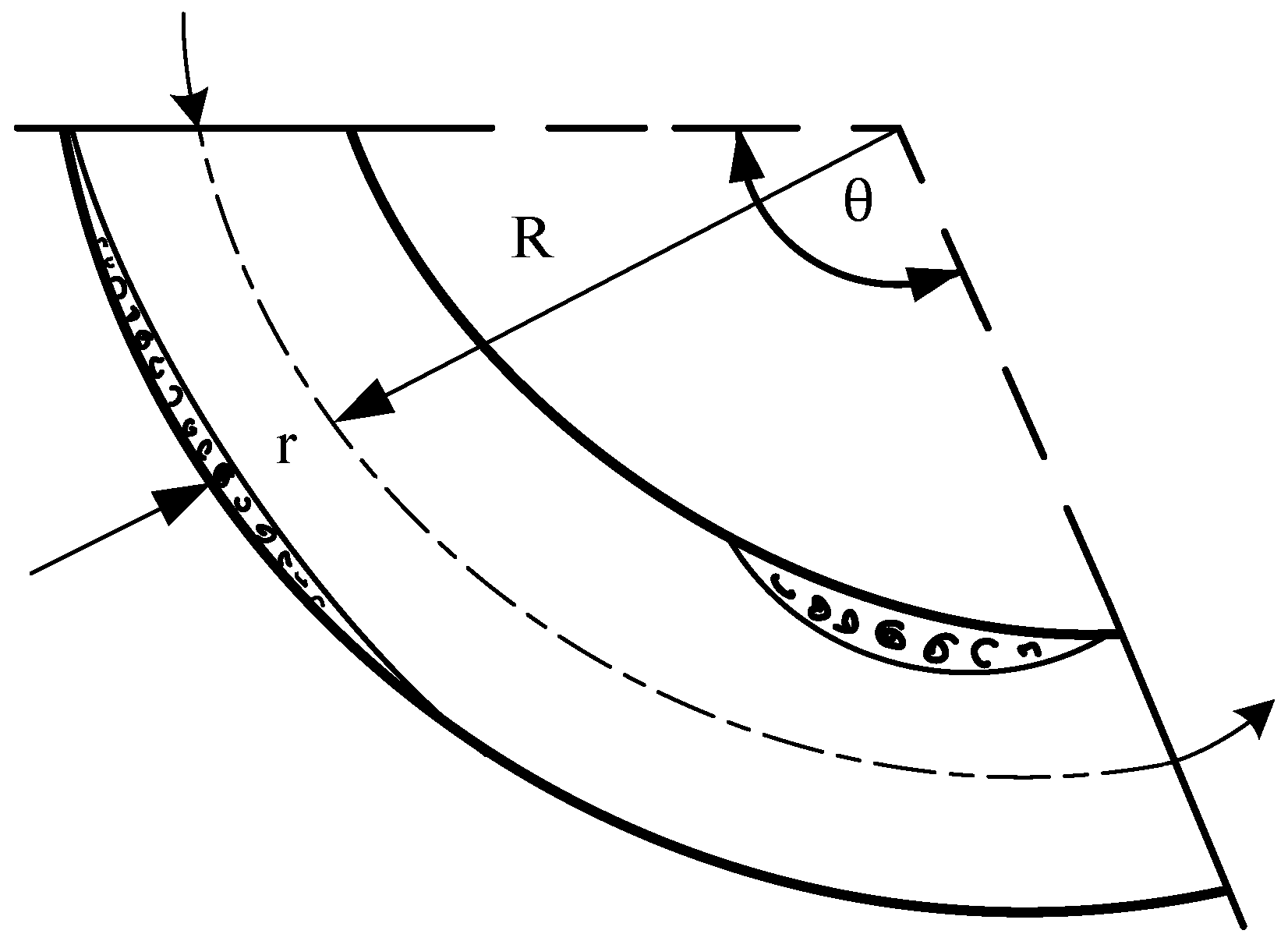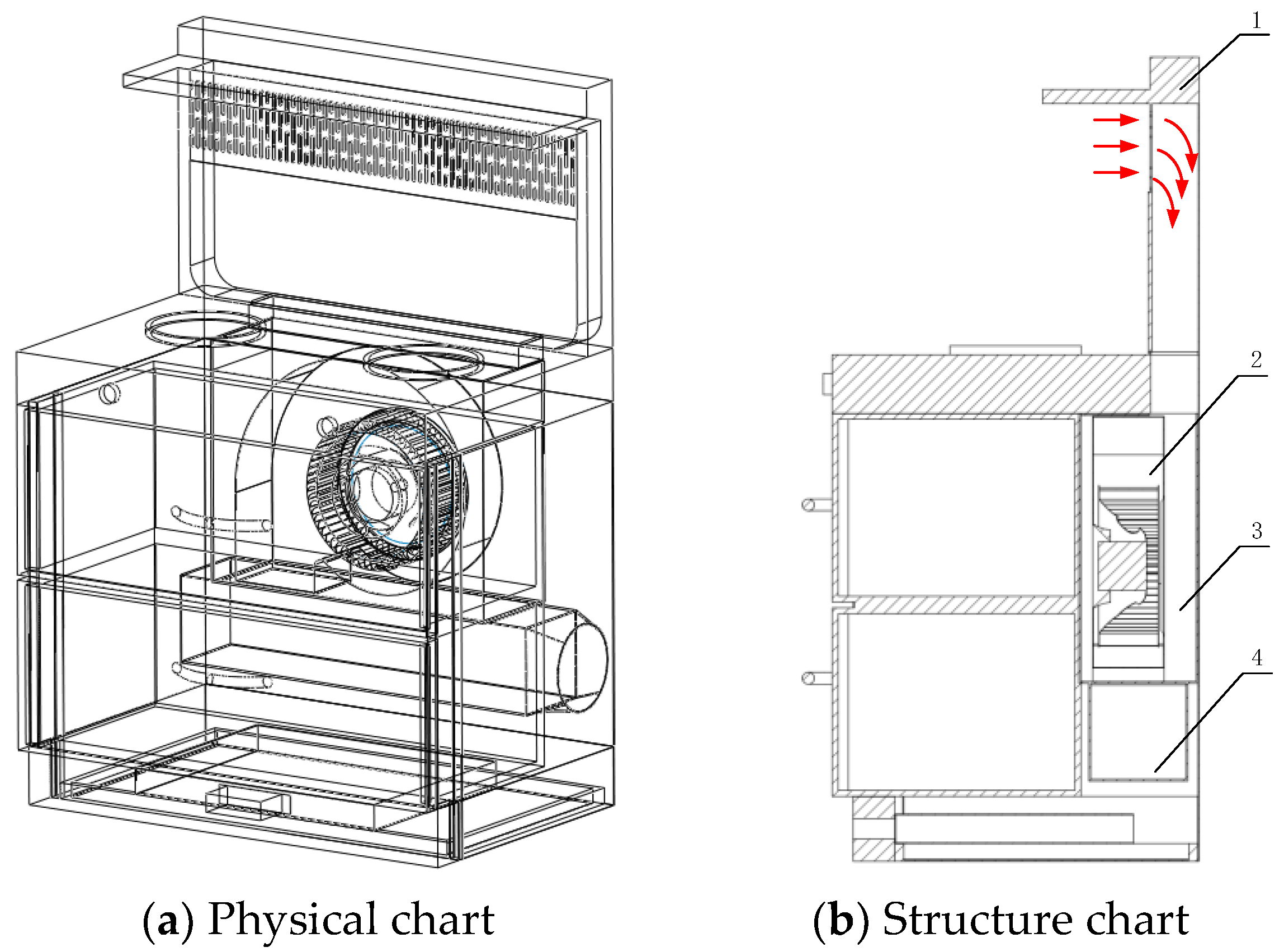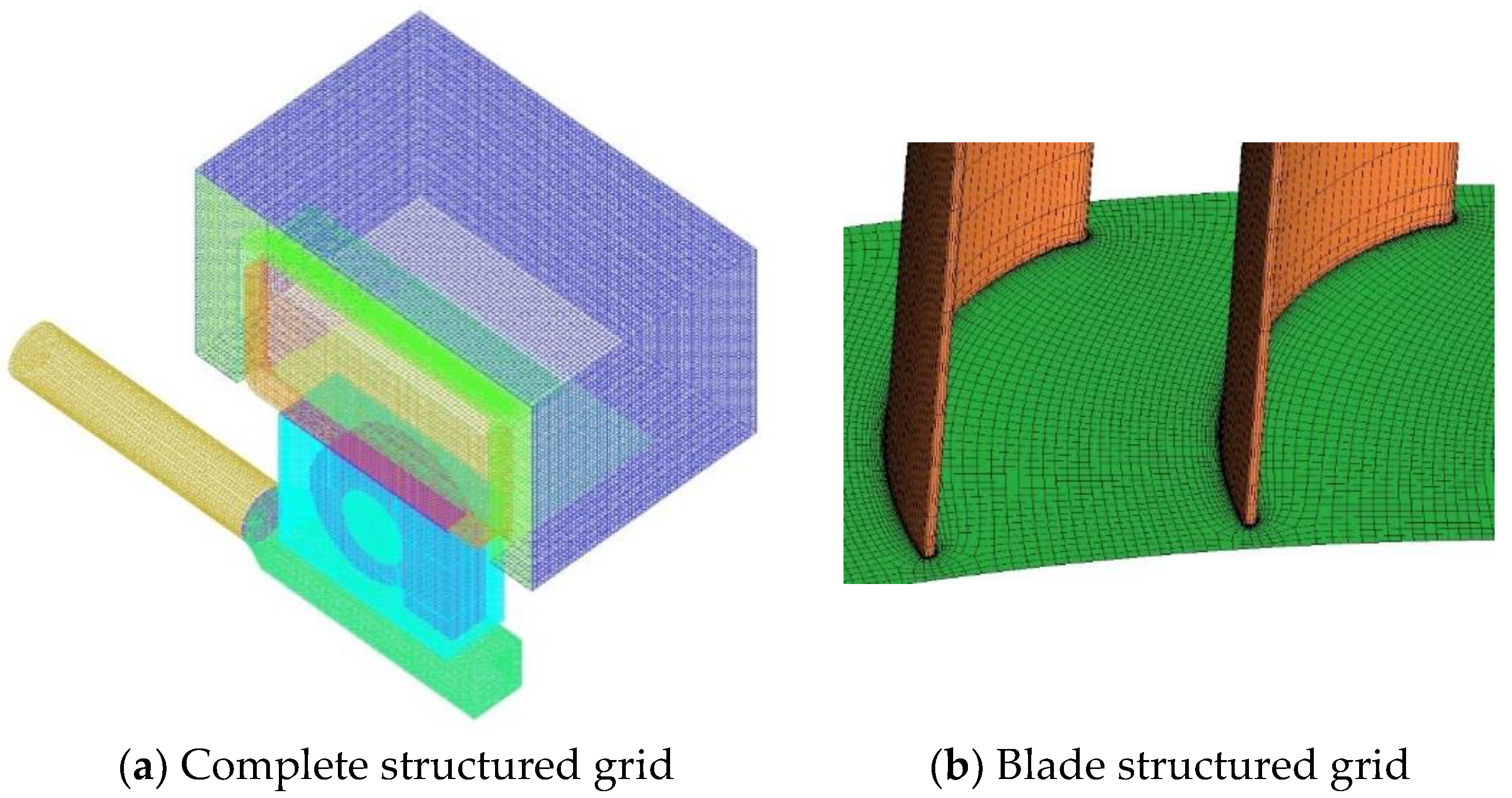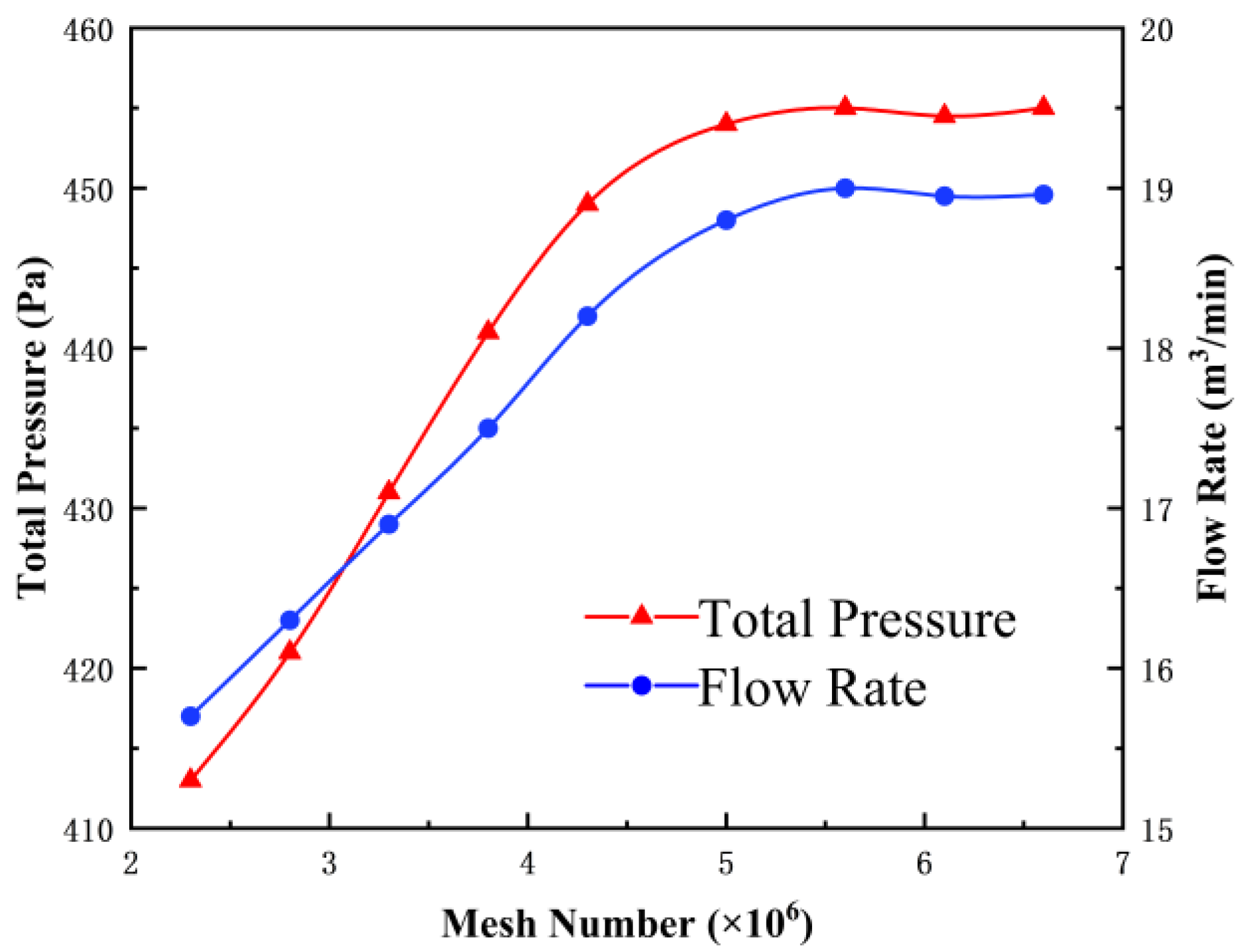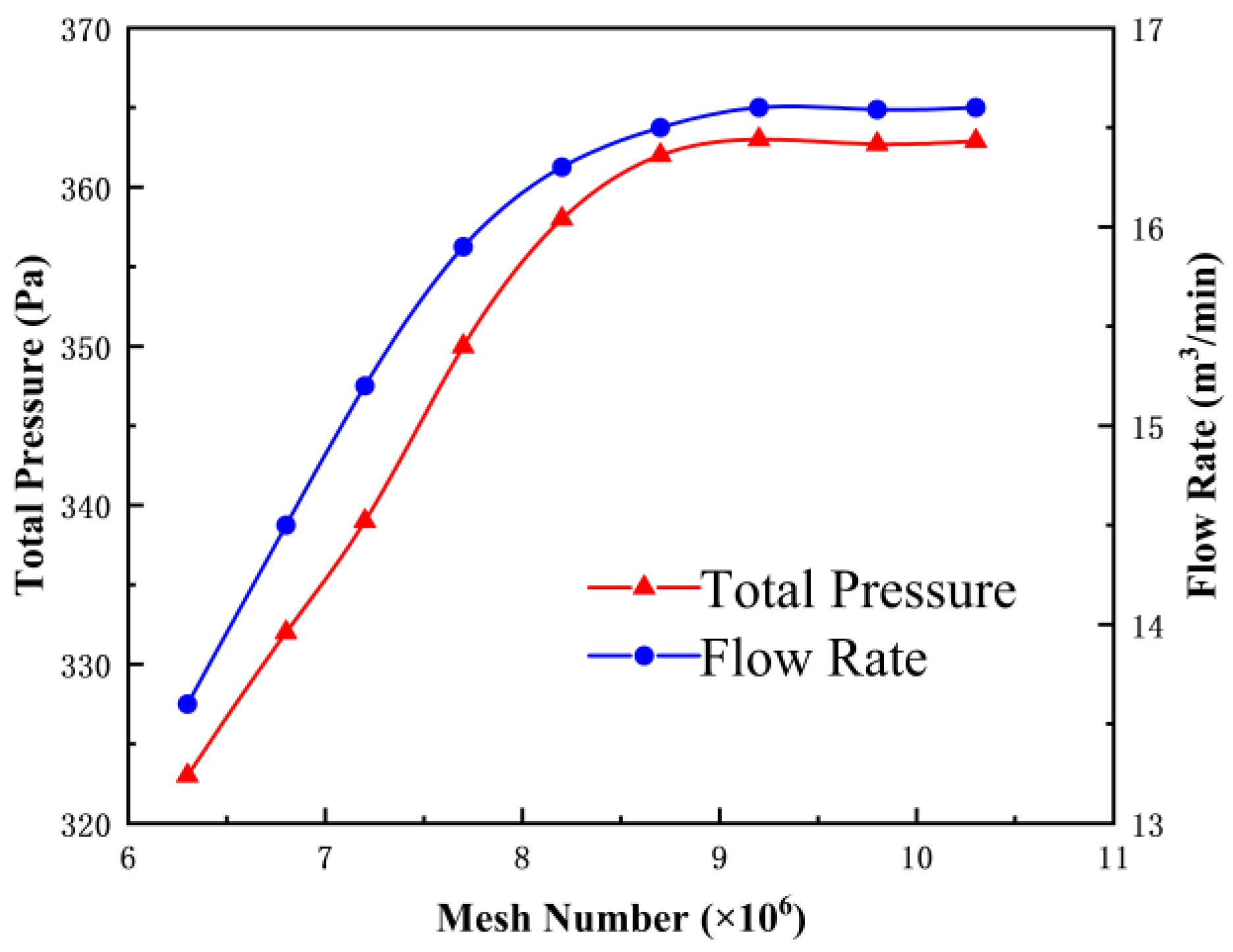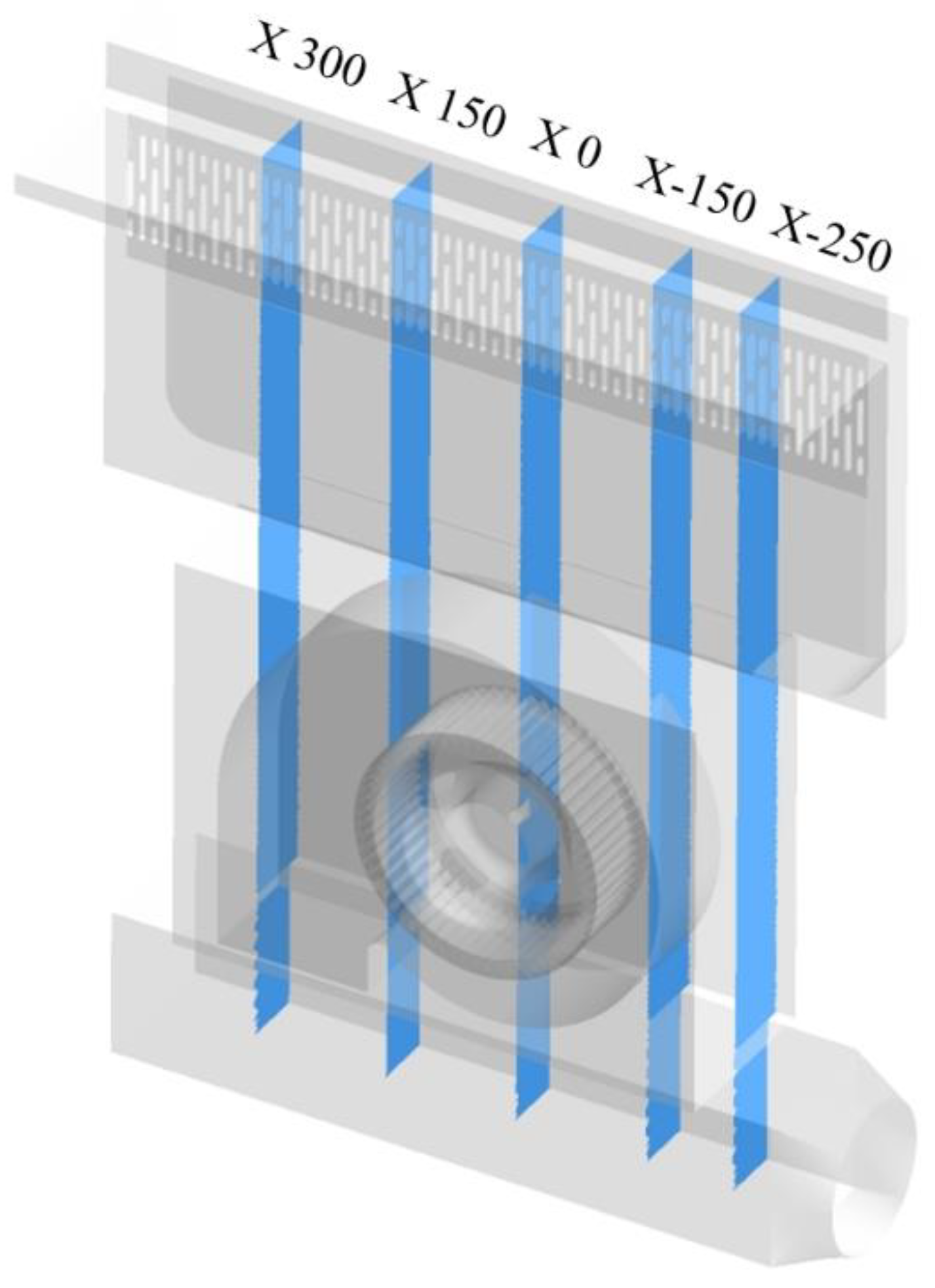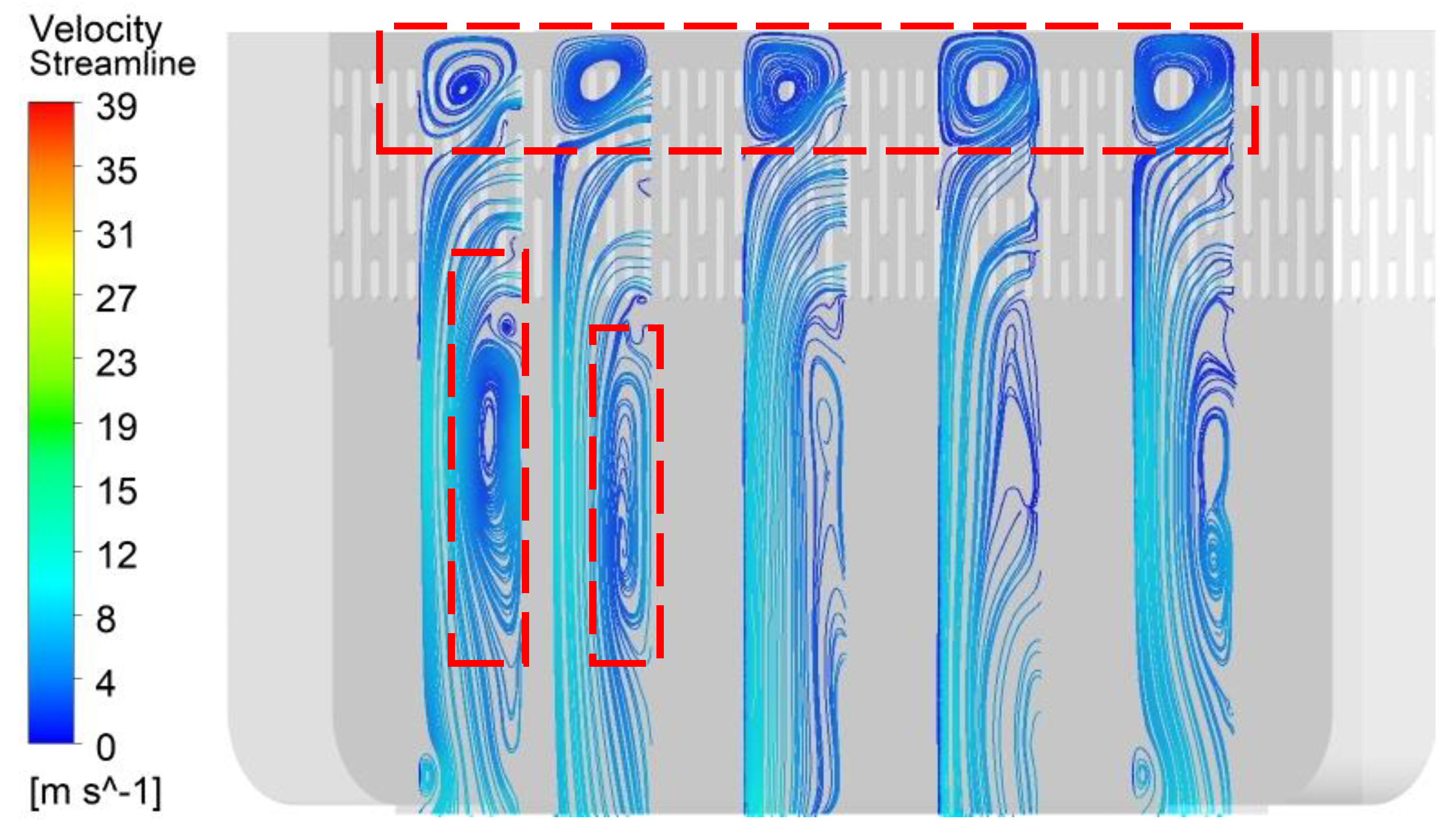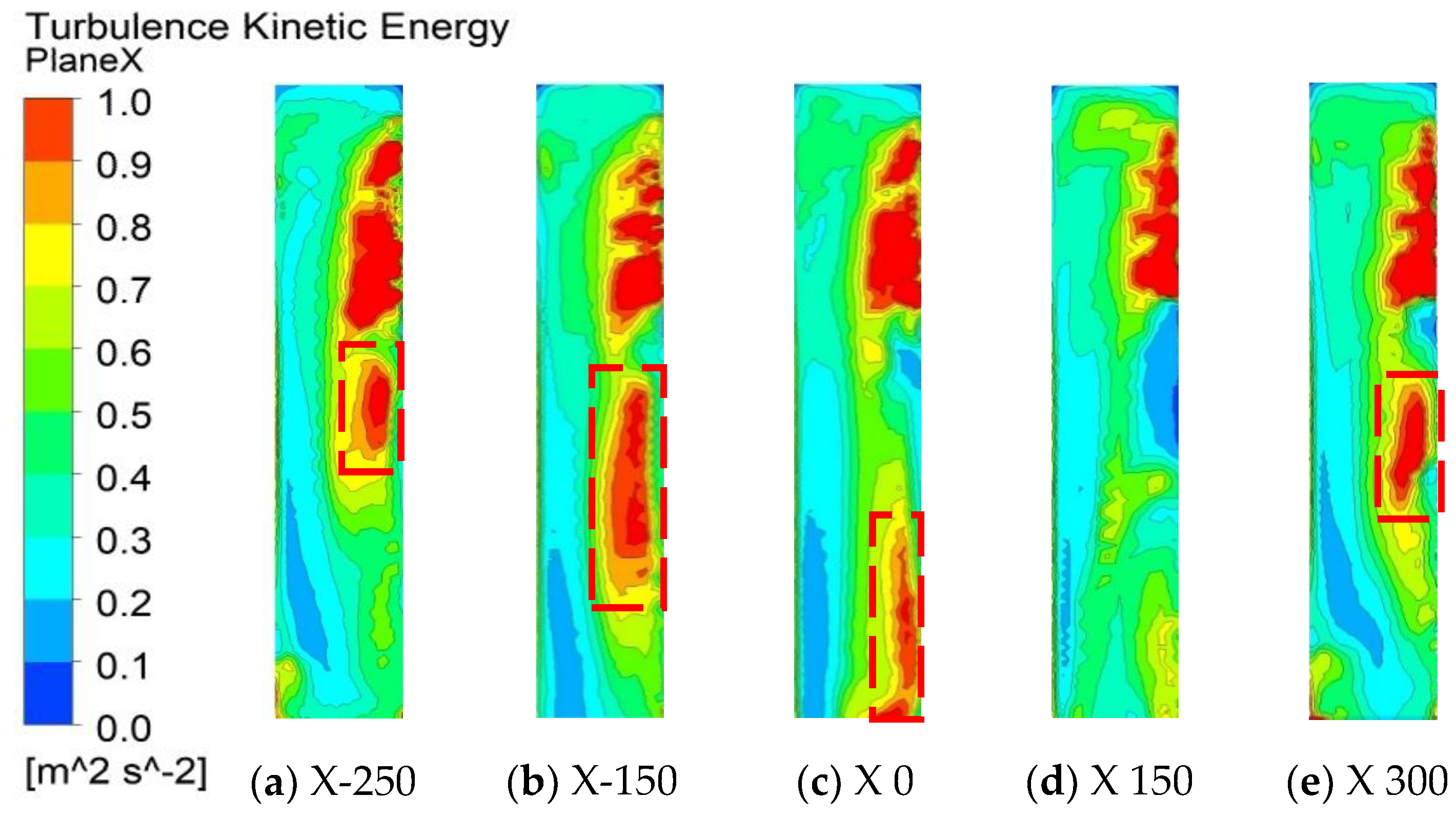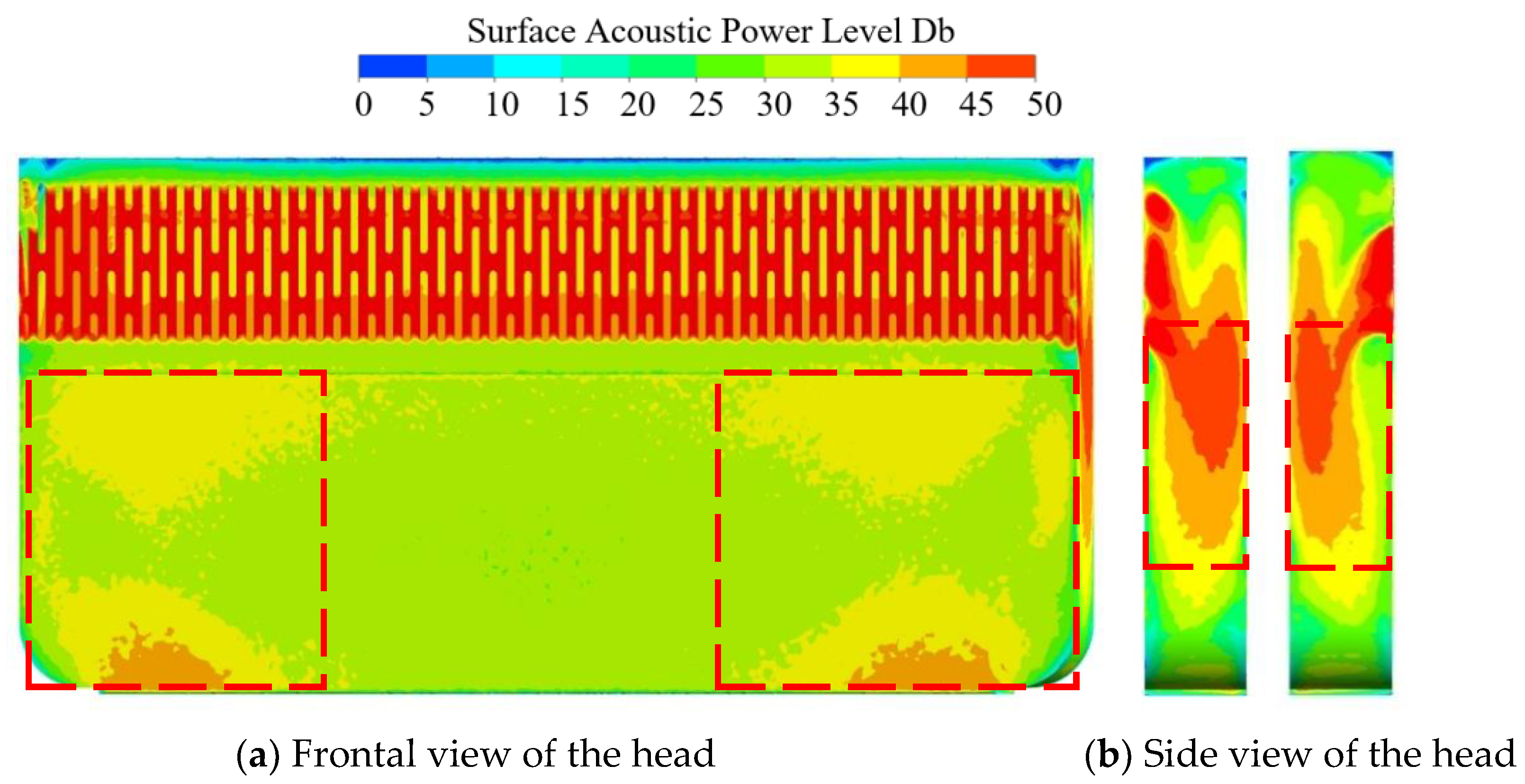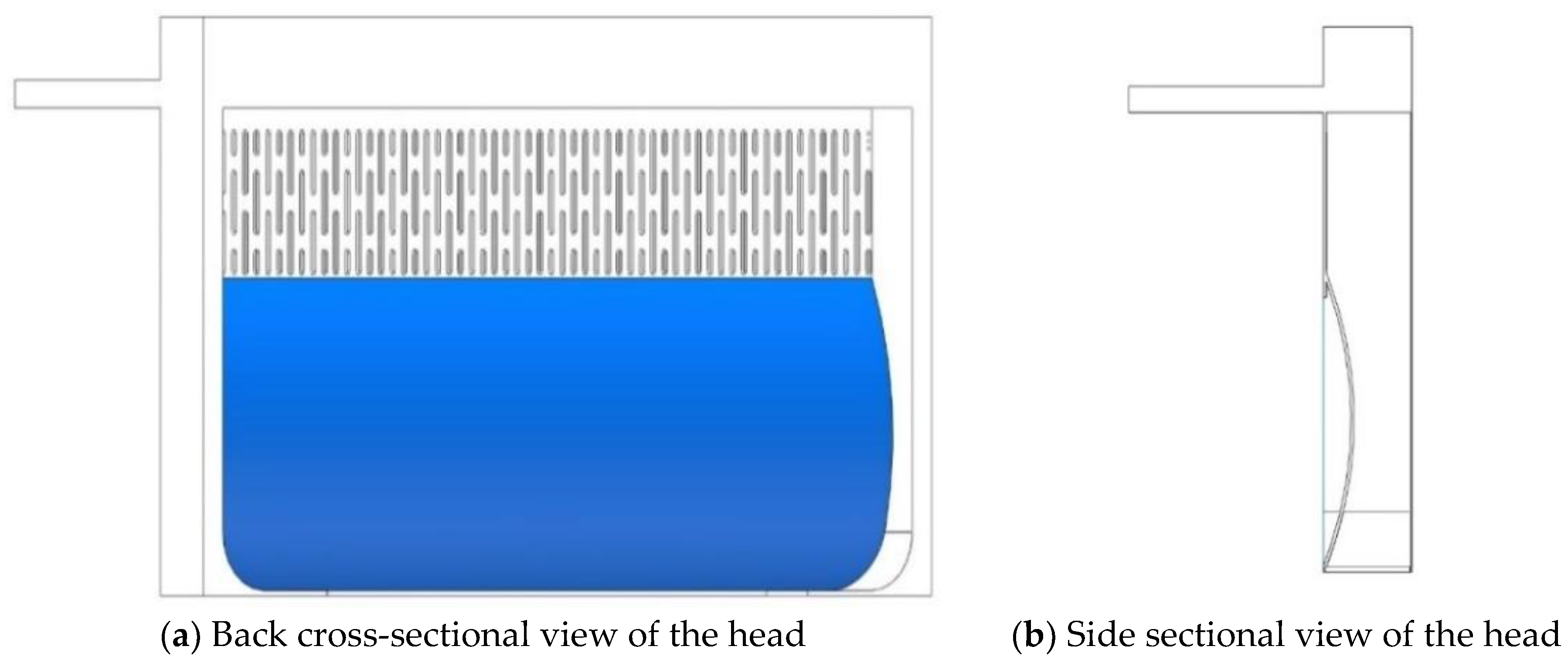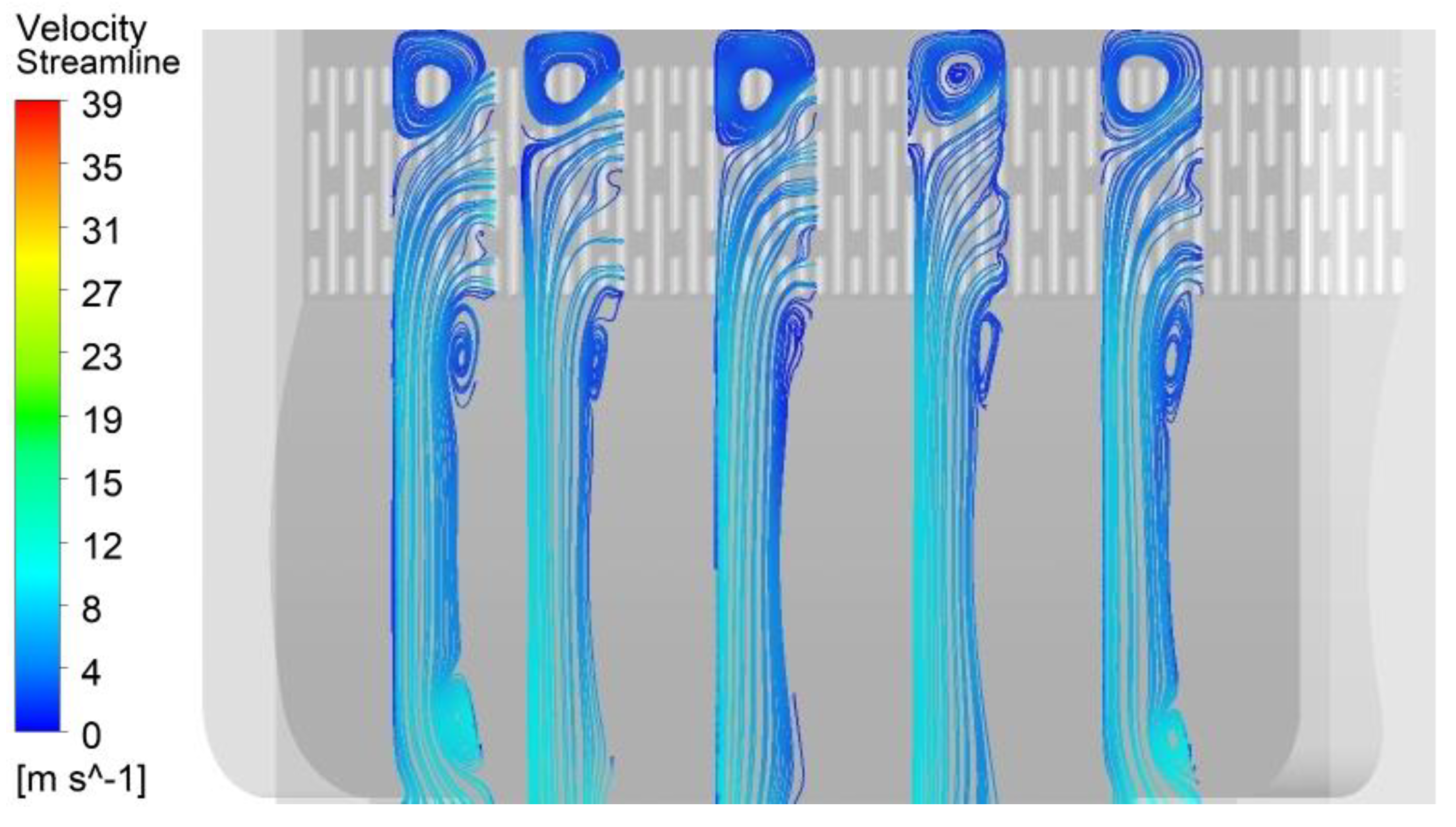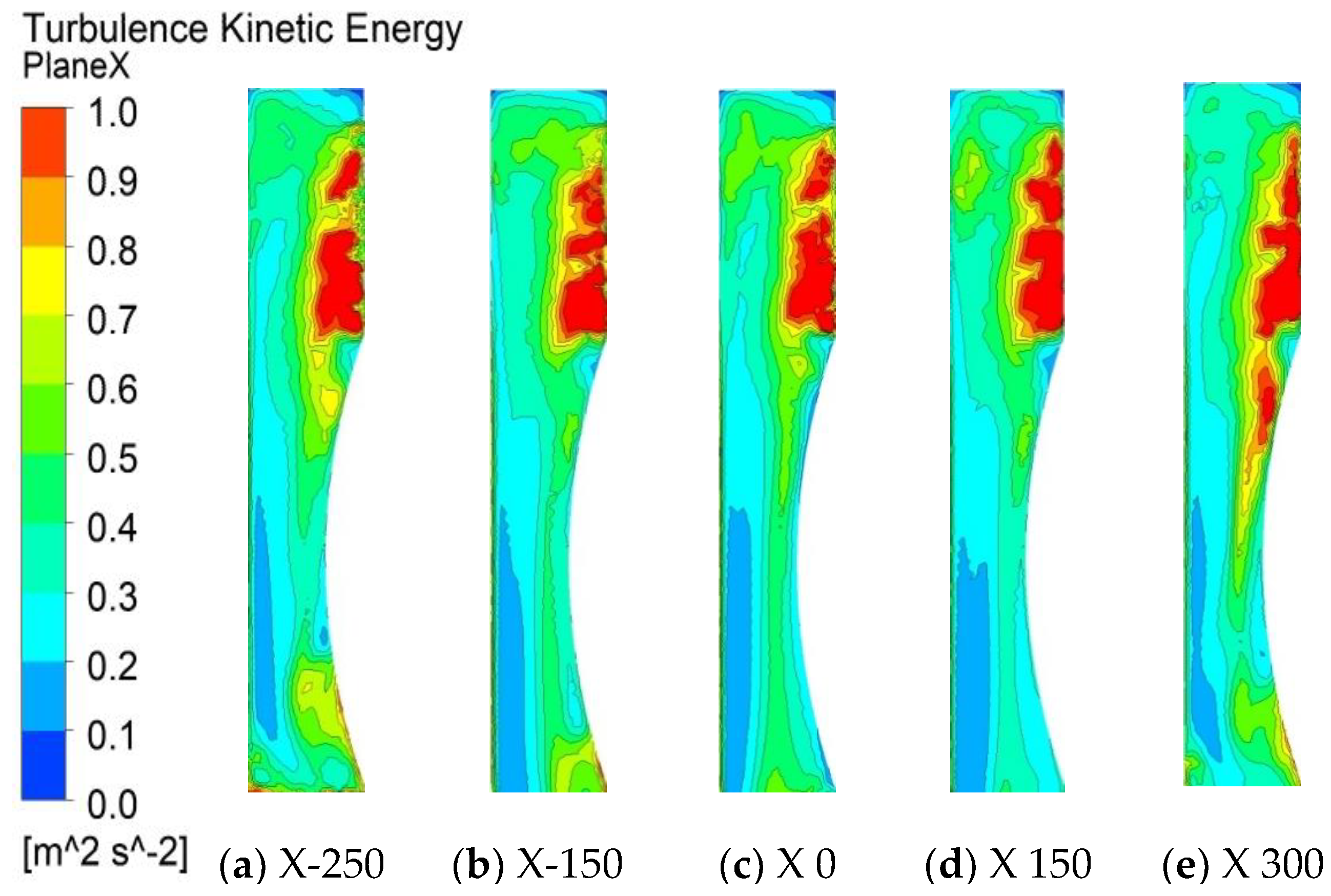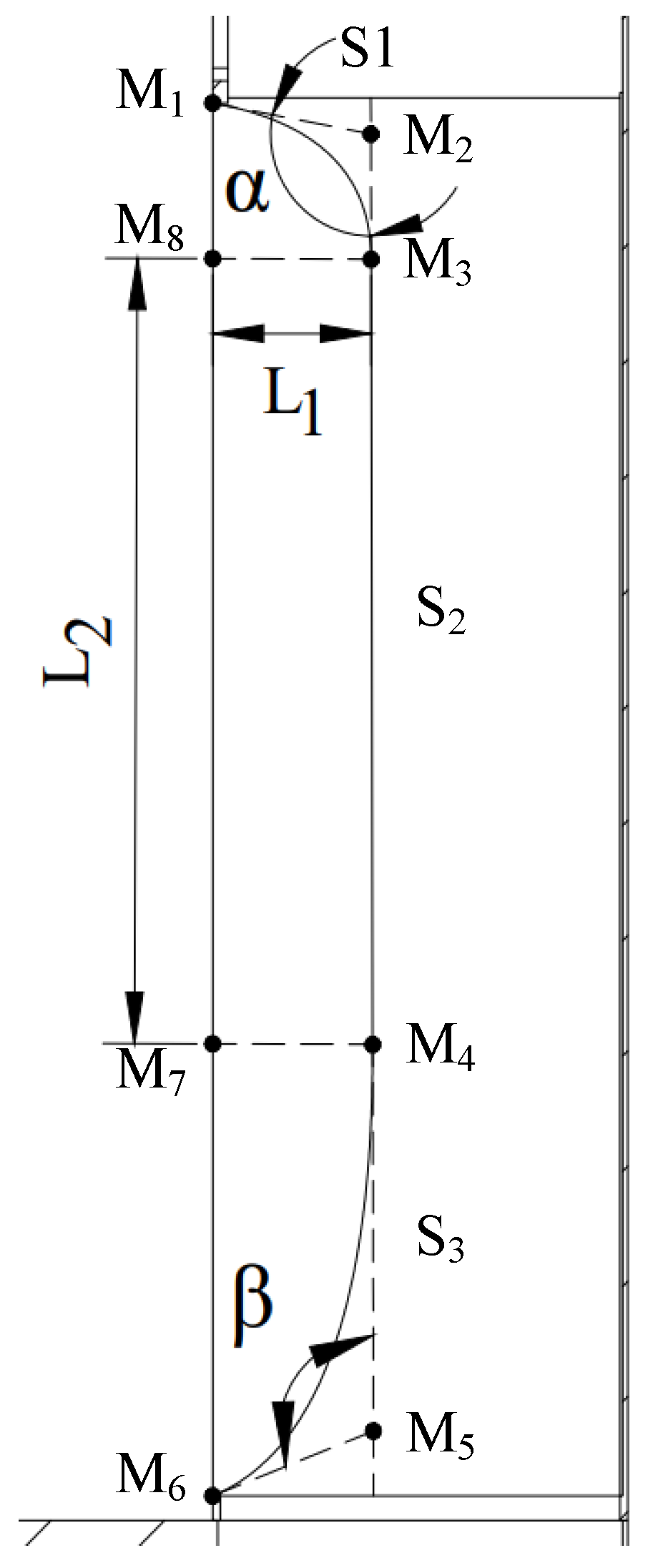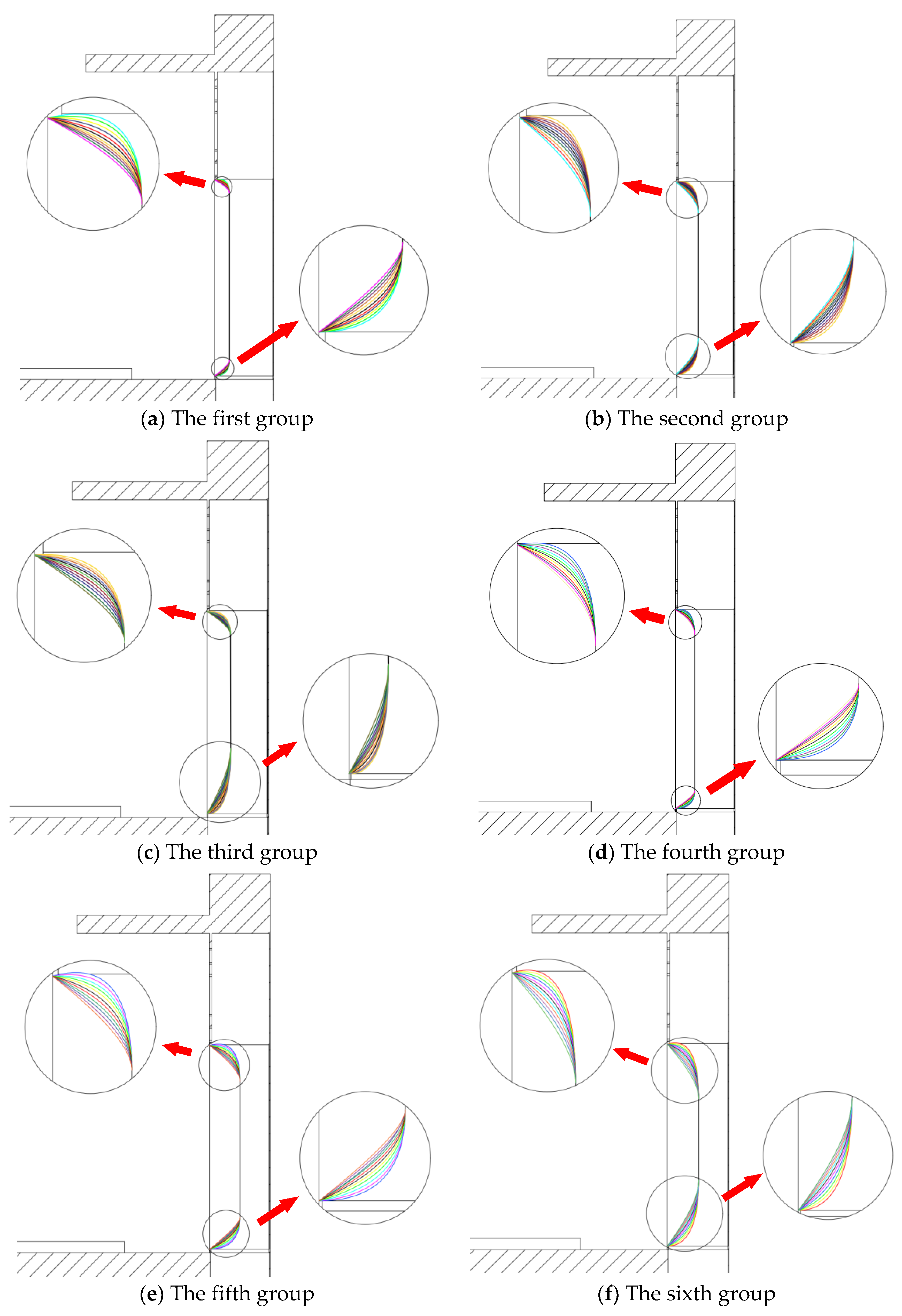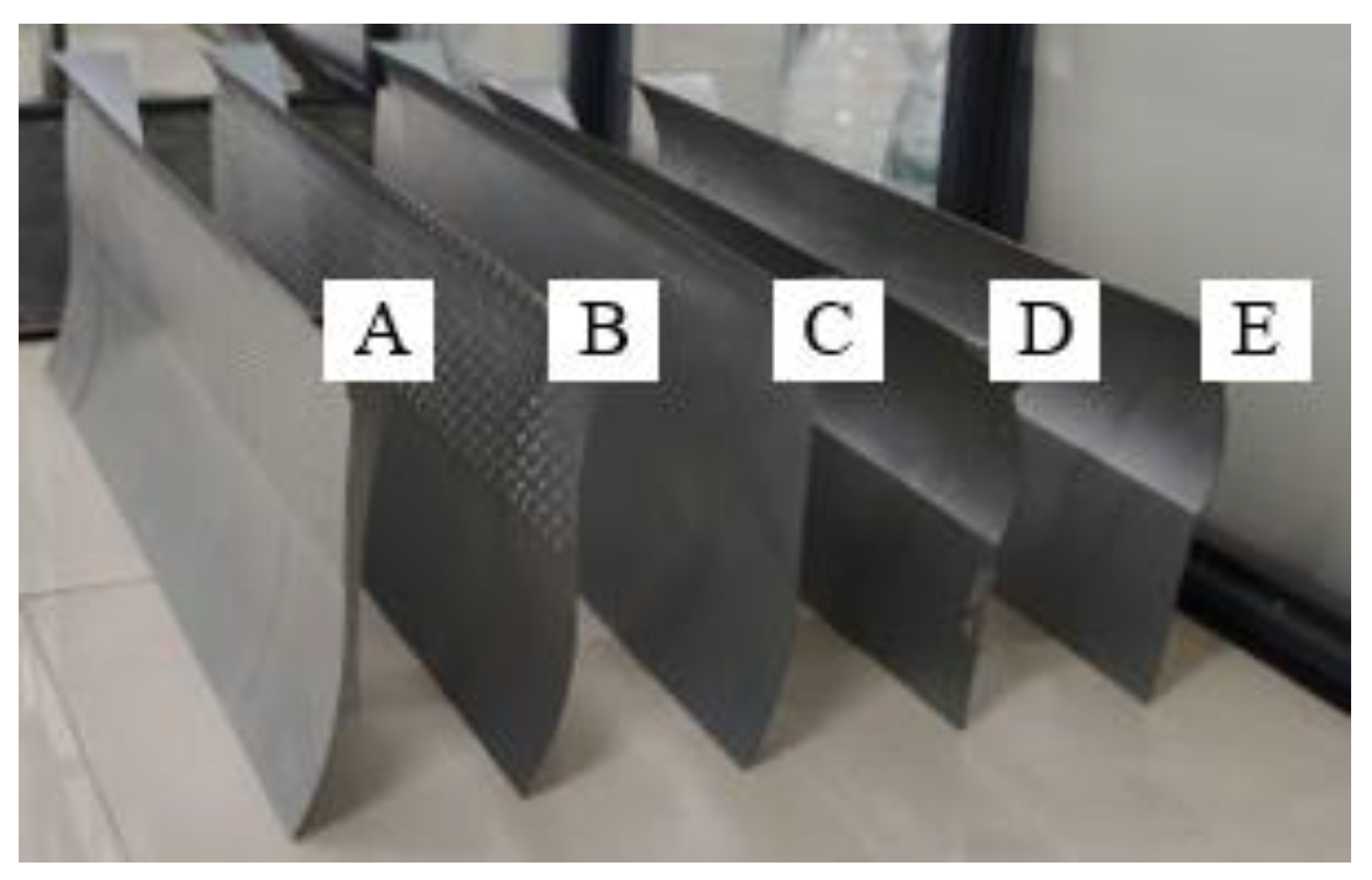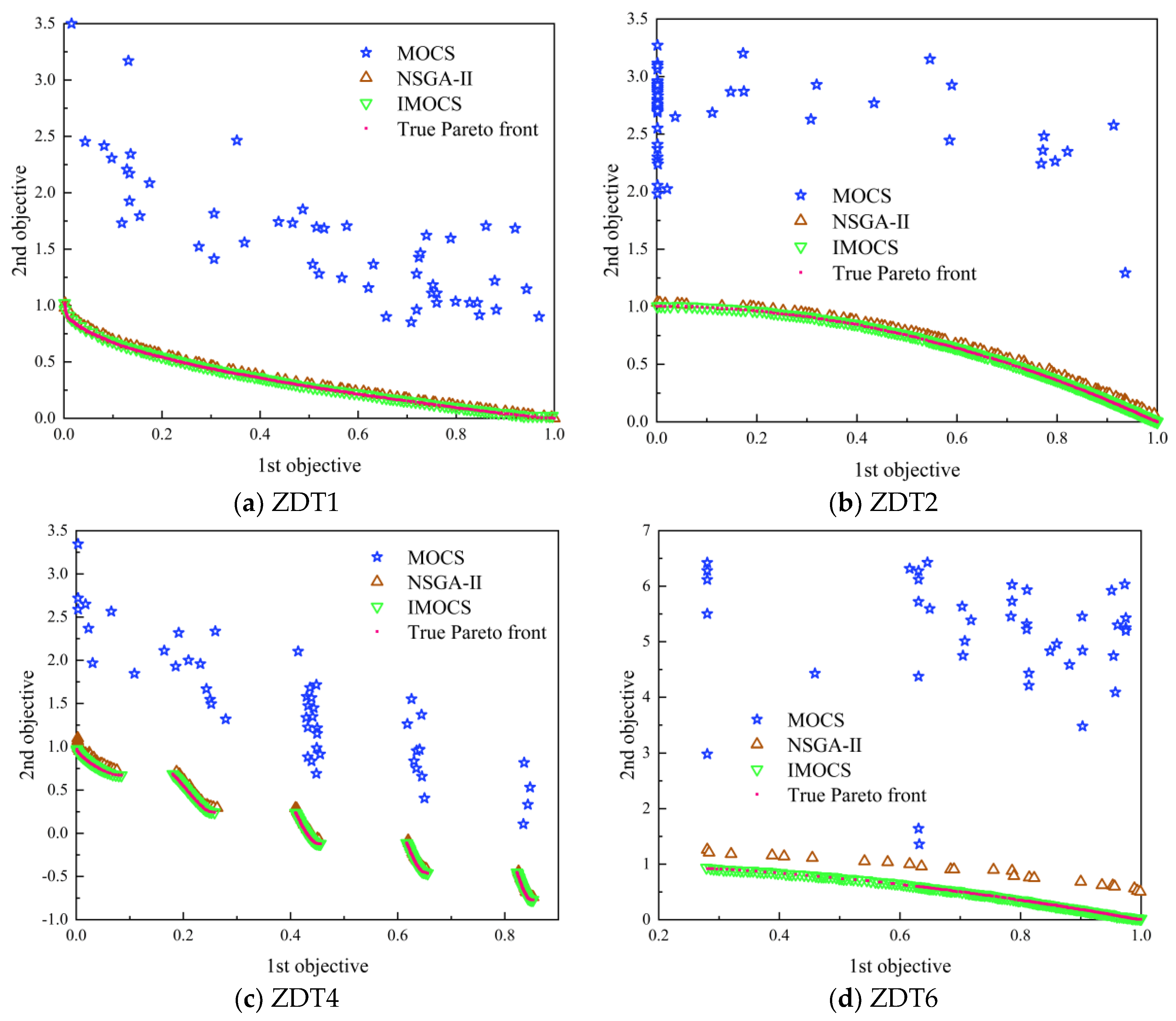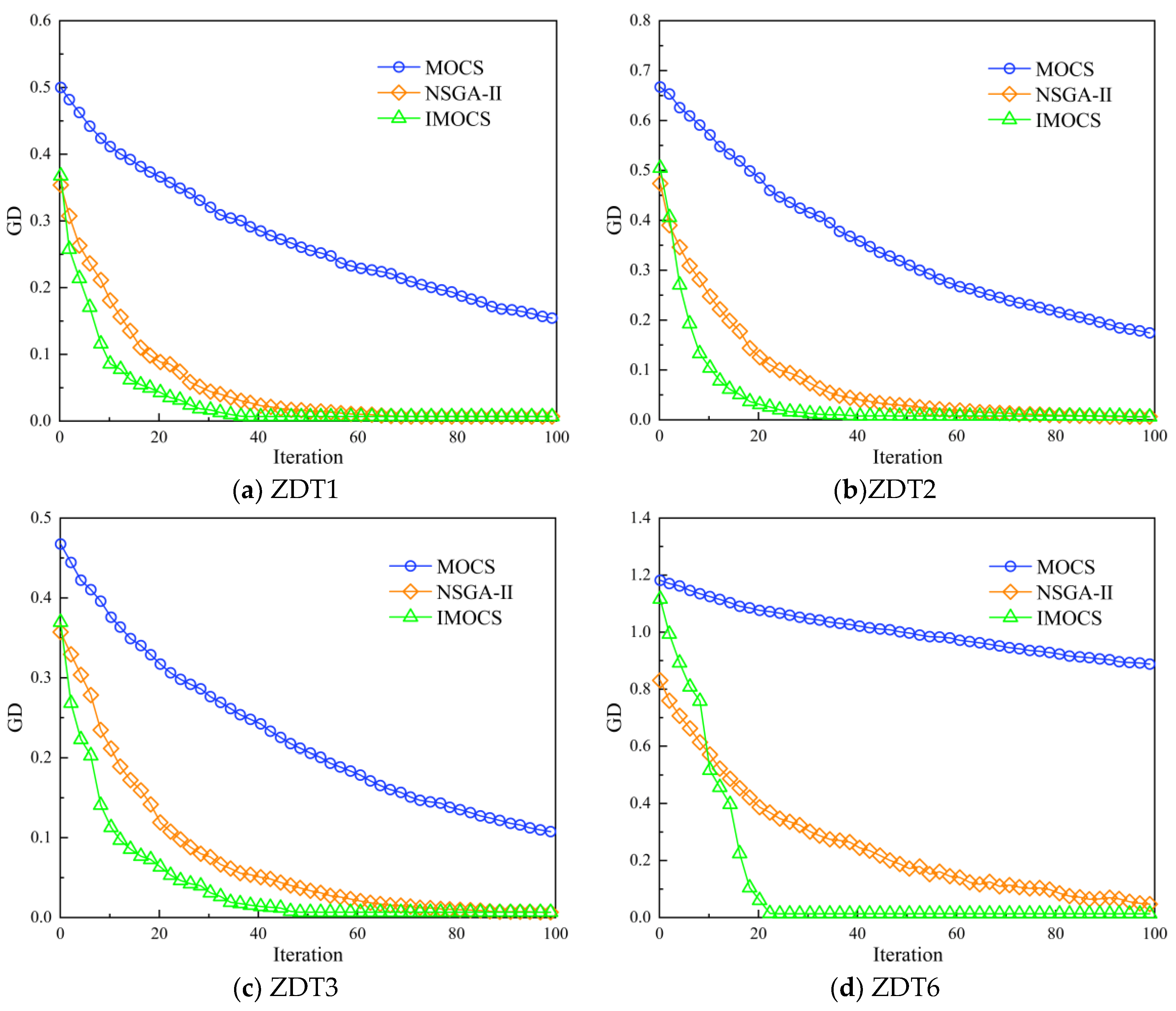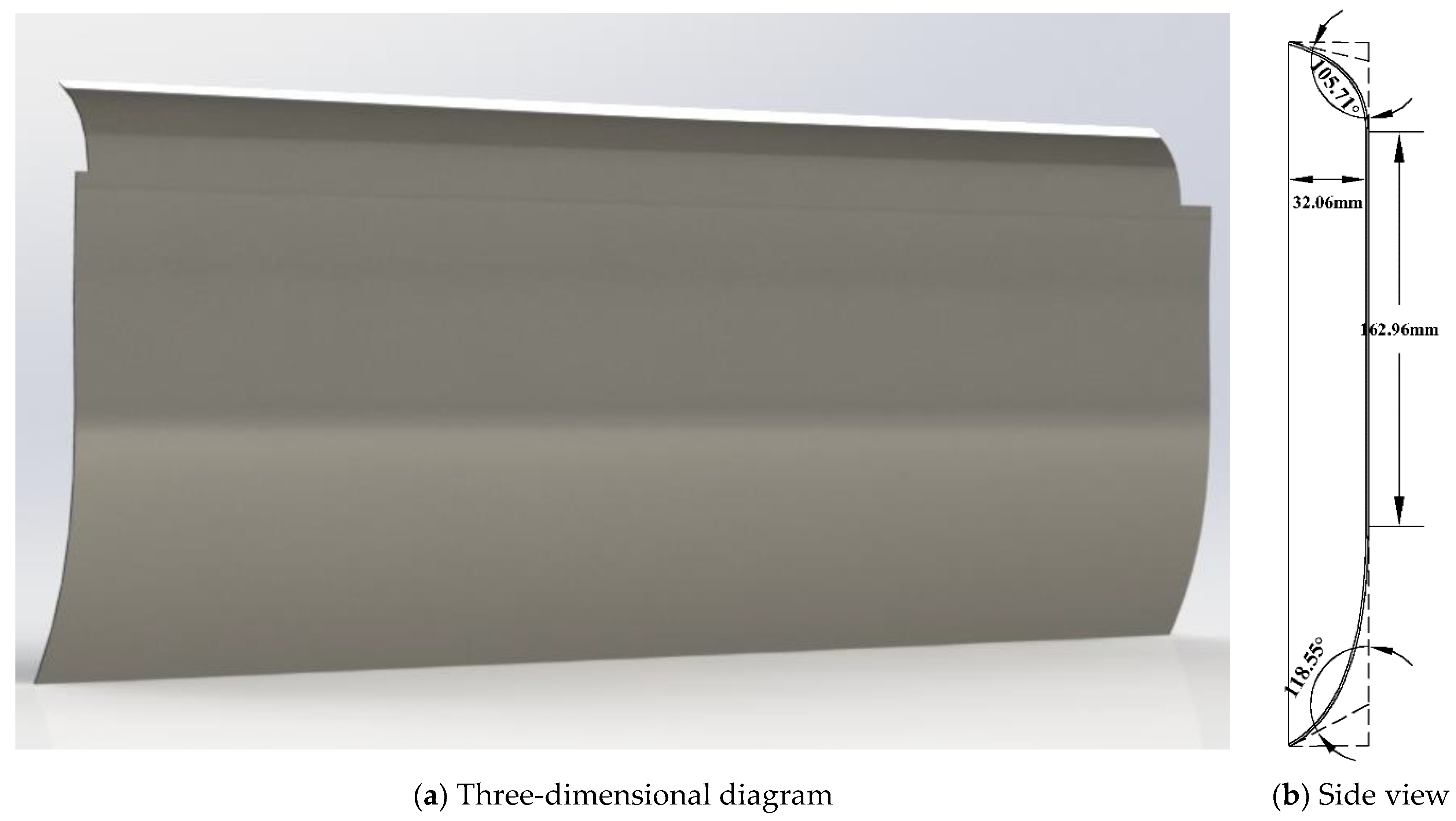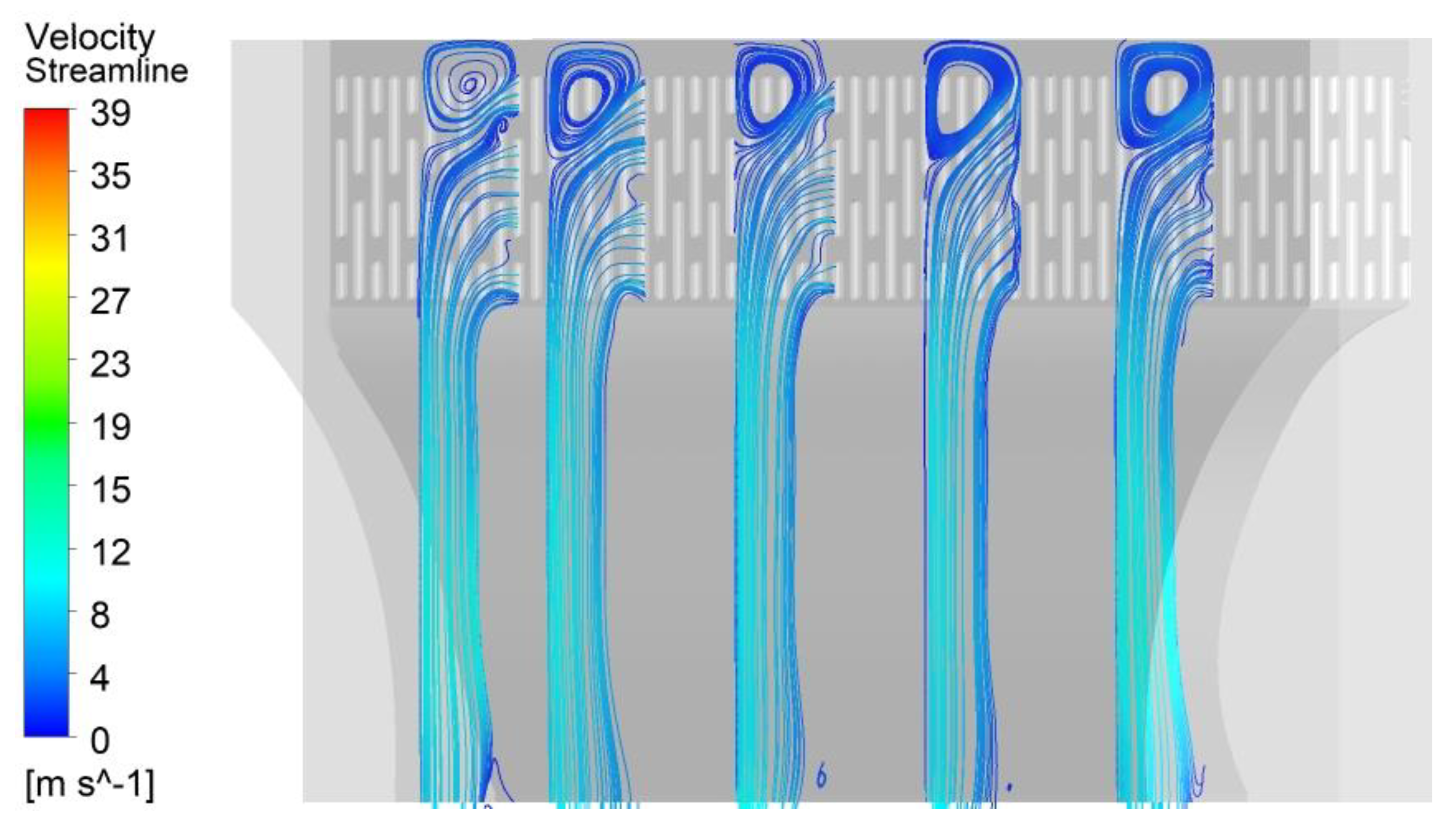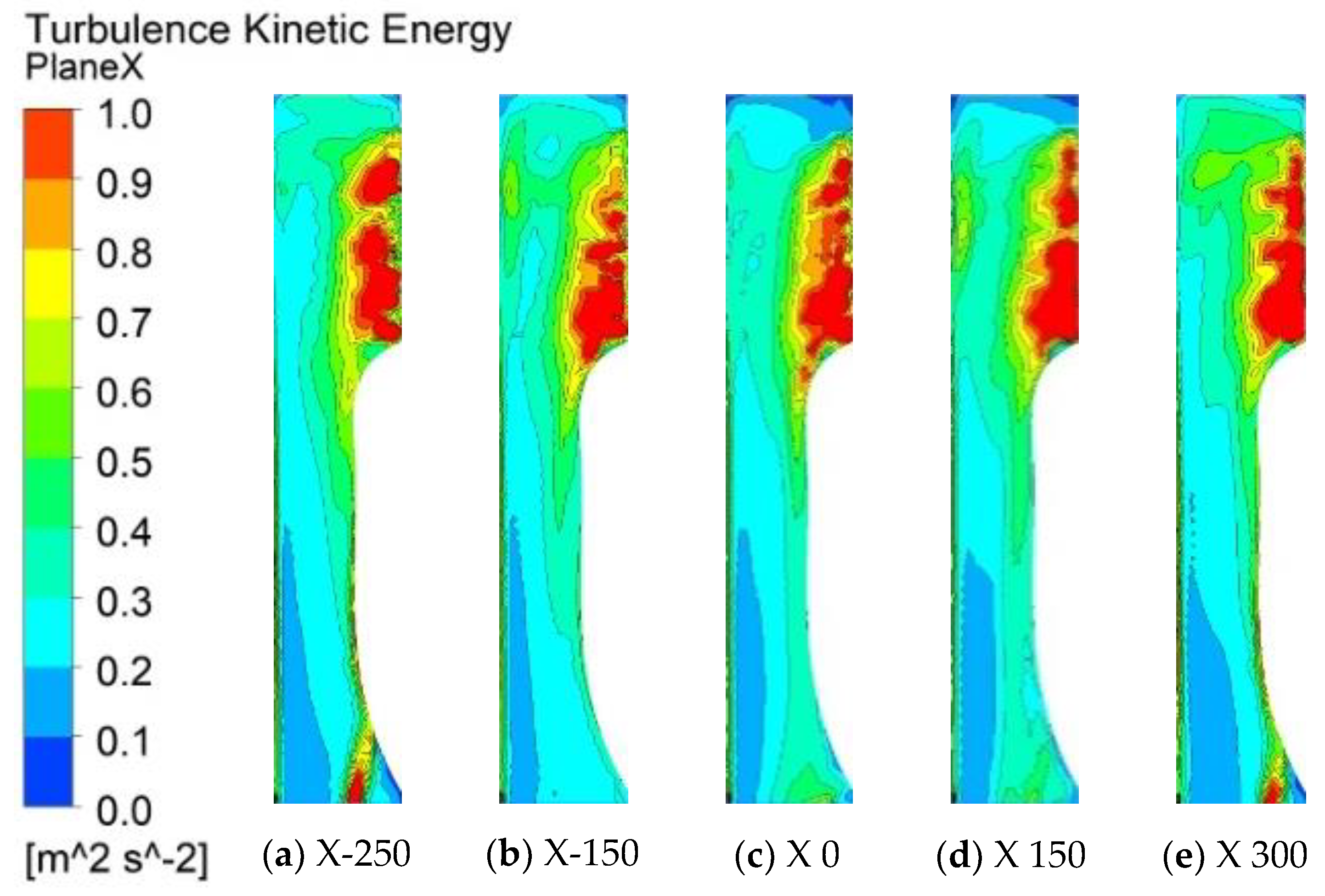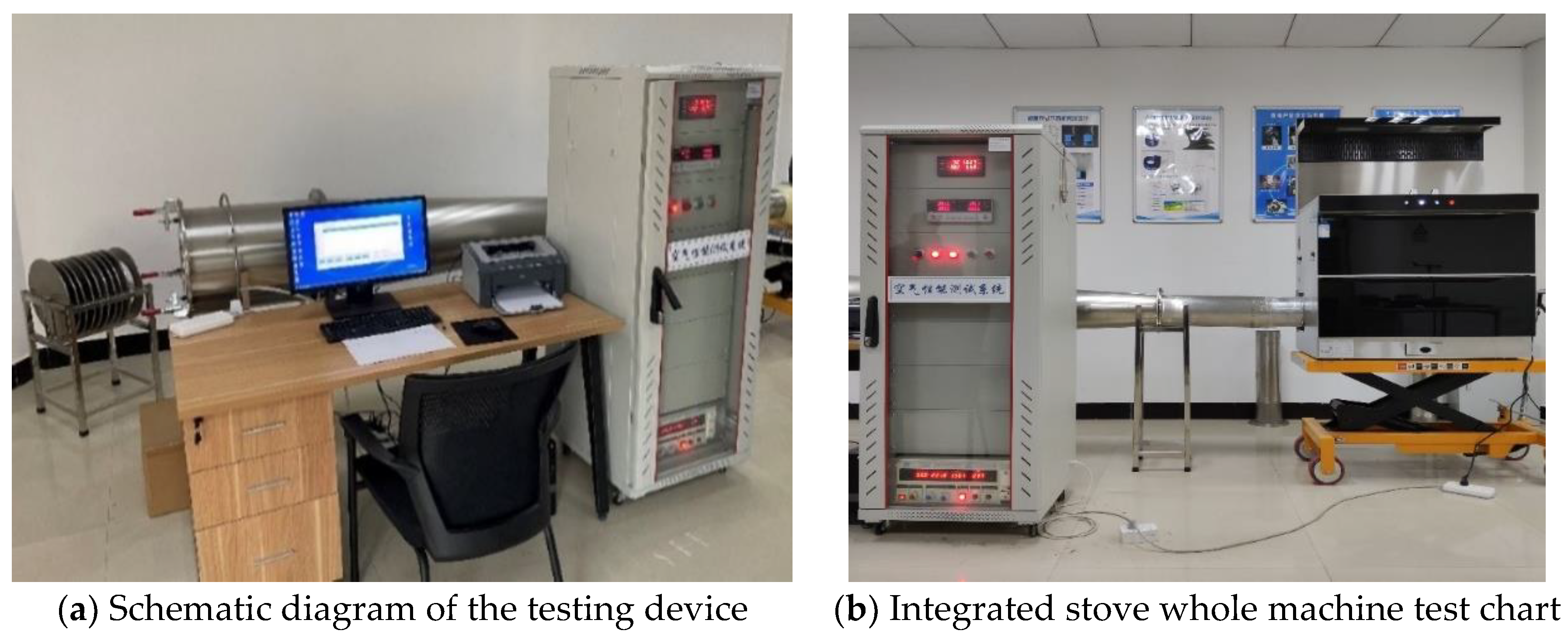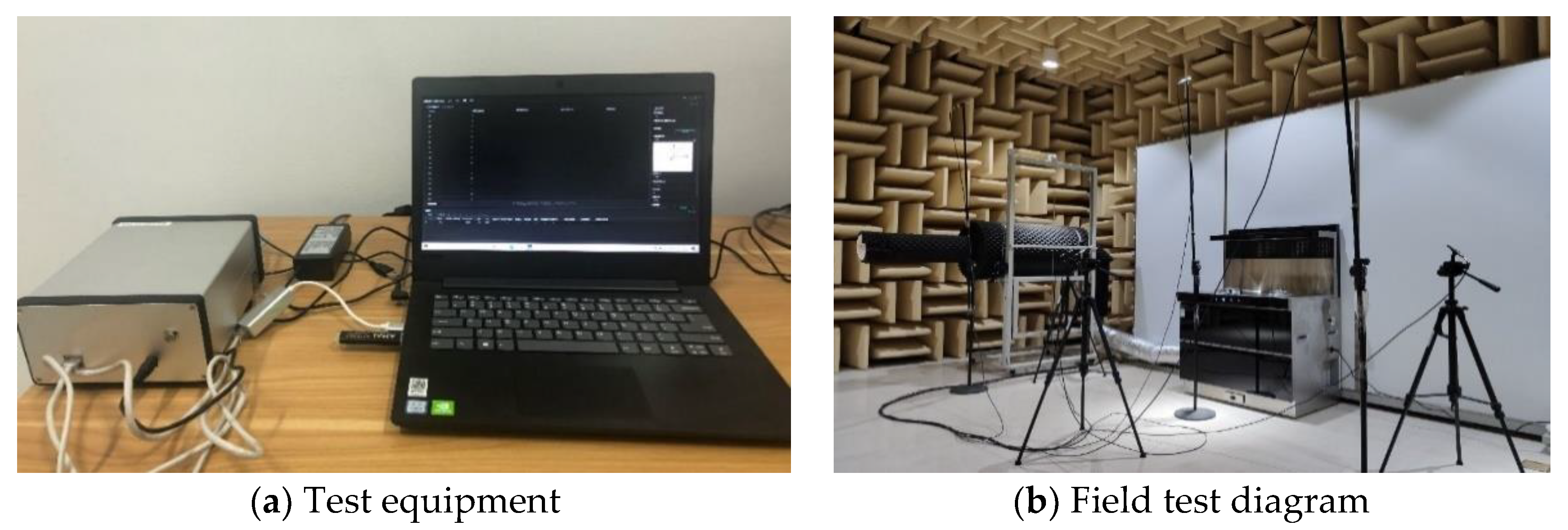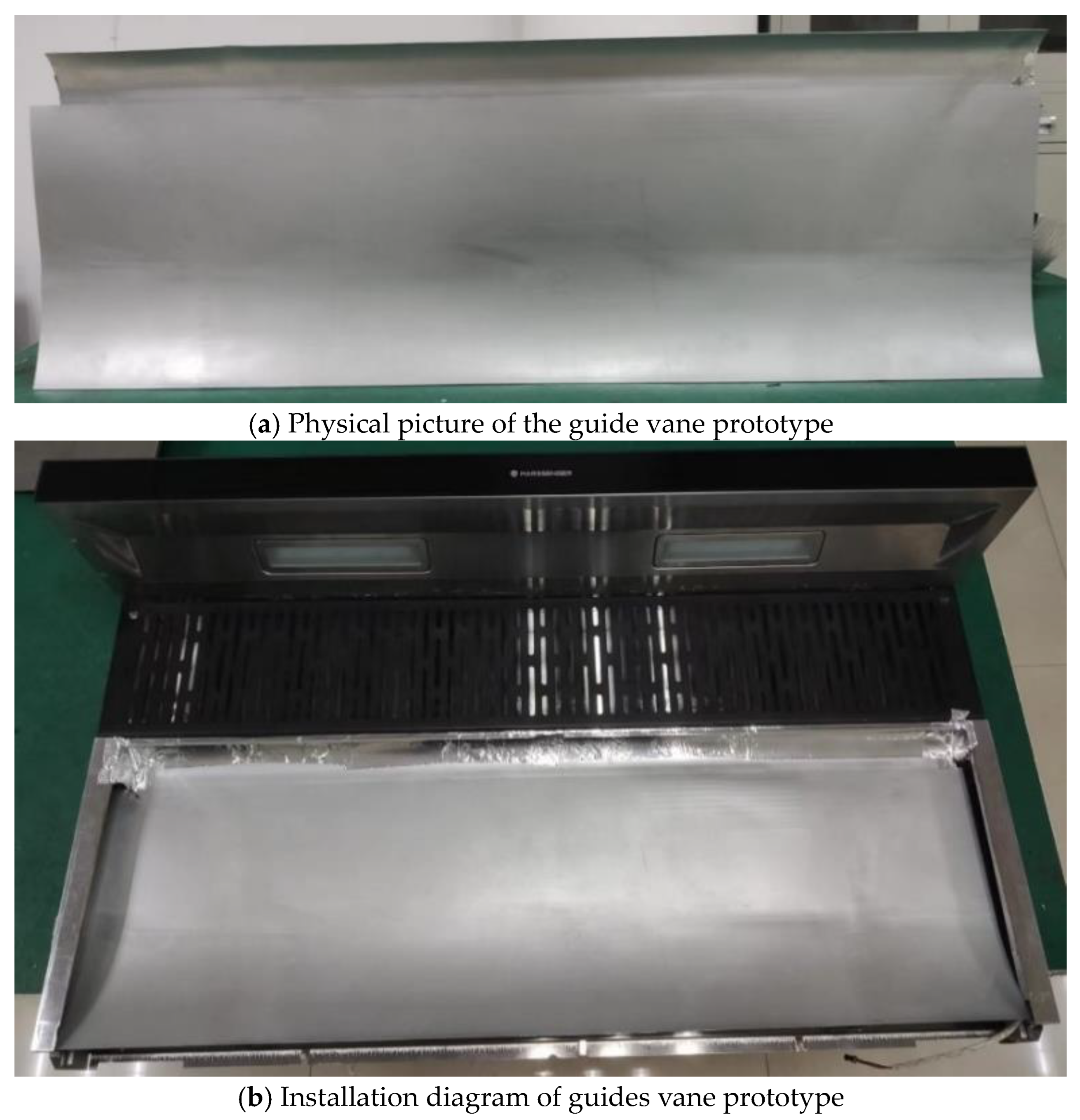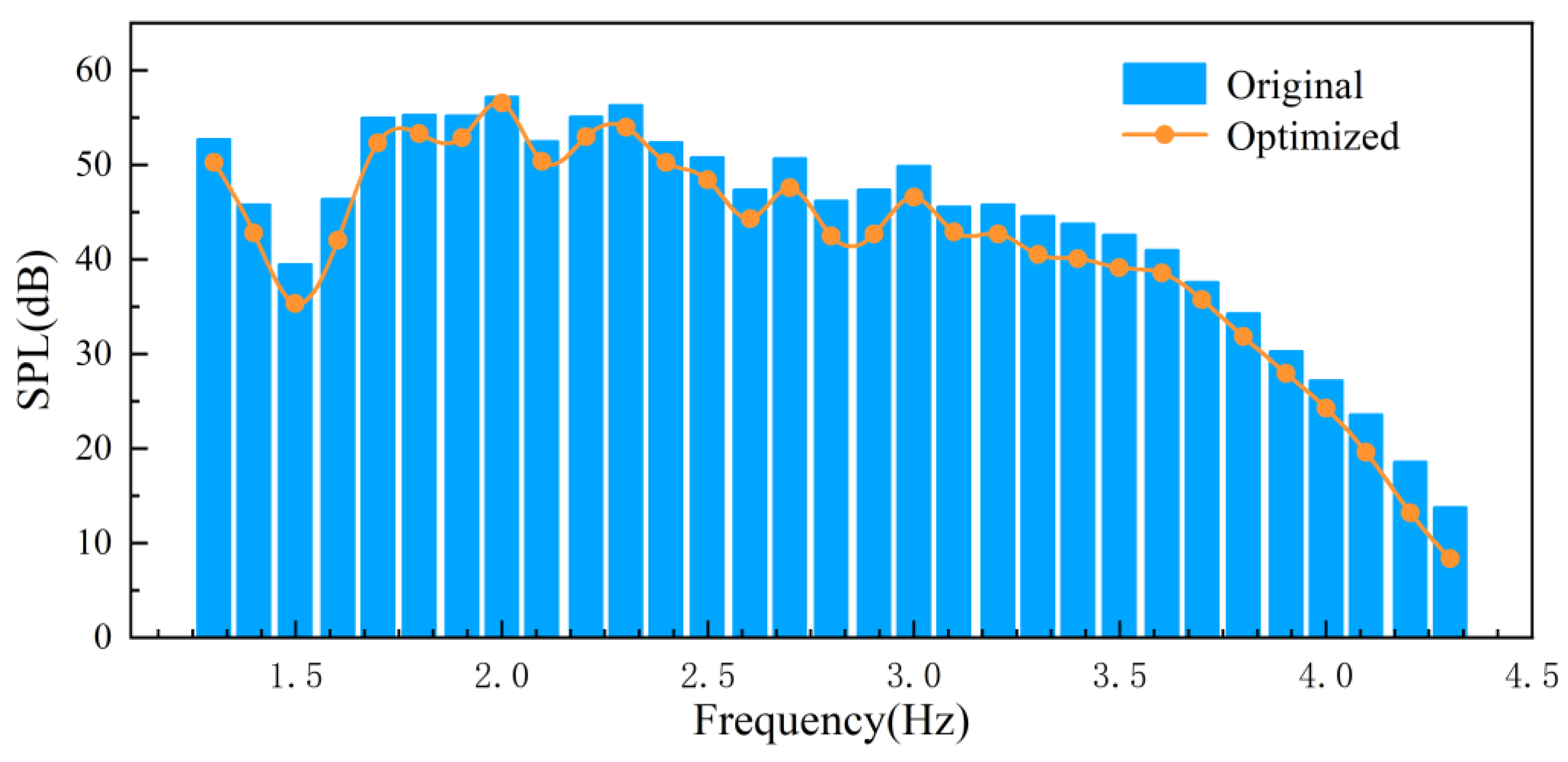4.1. Head Duct Flow Field Analysis
In this chapter, we first analyze the internal flow field of the integrated cooker head duct and propose an optimization scheme. In order to more accurately analyze the flow field characteristics inside the air duct of the integrated stove prototype head, the cross-section of the air duct along the X-axis direction is taken to observe the flow characteristics in the air duct.
Figure 6 is the cross-sectional position calibration diagram of the air duct at the head of the integrated stove in the X direction. The cross-sections in the X direction are represented by X-250, X-150, X 0, X 150 and X 300, respectively. The X 0 section is located on the vertical meridian plane of the multiblade centrifugal fan in the fan system, and the number in X 150 represents the horizontal distance between the section and the X 0 section.
Soot flows through the head duct from the integrated stove grille’s inlet under the fan system’s action. The resistance of its duct piping is mainly concentrated at the inlet of the filter grille. As the oil smoke is absorbed into the head duct, the direction of the oil smoke movement undergoes a significant angle turn, and the process will cause a large fluid energy loss. By numerical simulation of the internal flow field characteristics of the head duct, the cross-sectional flow diagrams of the integrated cooker head duct in the X direction (X-250, X-150, X 0, X 150, and X 300) are shown in
Figure 7. The overall flow line distribution in the head duct is uneven. When the airflow enters the interior of the head duct from the inlet grille, many vortices appear at the top of the head duct and near the wall of the front baffle side, among which the vortex flow field at the top of the head duct is weak. The vortex is one of the main reasons for noise generation in the head duct of the integrated cooker. The swirl area of the integrated stove head duct will block the duct pipeline and cause local resistance in the duct, resulting in the loss of airflow, thus reducing the smoke exhaust efficiency of the exhaust system.
Figure 8 shows the turbulent kinetic energy clouds of different X-directional cross-sections in the head duct of the integrated cooker. The selected X-directional cross-sections are X-250, X-150, X 0, X 150, and X 300. It can be seen that when the airflow flows into the head duct from the inlet of the integrated cooker, a large number of highly turbulent kinetic energy areas appear at the near wall of the front baffle side, which corresponds to the vortex areas in the above figure. These high turbulent kinetic energy areas can lead to broadband noise in the system. However, the vortex region formed above the head duct in
Figure 7 is not reflected in the turbulent energy cloud in
Figure 8, so it is assumed that the vortex region has little effect on the noise. The subsequent numerical simulation and test will verify the conjecture.
In order to investigate the main noise areas inside the head duct, based on the above validated numerical simulation method, the noise distribution information of the prototype head duct basin surface is extracted in this paper, as shown in
Figure 9. From
Figure 9a, it can be seen that the highest sound power level is presented at the air inlet grille of the head, which is in line with the realistic and unavoidable situation due to the impact of airflow; the near wall surface of the front baffle side also presents a higher sound power level, which is consistent with the analysis results in
Figure 7 and
Figure 8. From
Figure 9b, it can be seen that the upper area of the head duct does not show high sound power level, which is consistent with the analysis results of
Figure 8, indicating that the vortex is not the only necessary condition for noise generation in the duct system, but also to analyze its energy loss, and both sides of the head duct show high sound power areas. Therefore, the optimization of the integrated stove head duct will focus on the area near the wall at the front baffle side.
4.2. Head Air Duct Optimization Design
To address the defects of the head duct summarized above, this section optimizes the duct structure by adding guide vanes at the defective parts. The first is to optimize the design at the near wall of the front baffle side. The analysis of the numerical simulation results in
Figure 7 and
Figure 8 shows that there are a large number of the vortex and high turbulence kinetic energy areas at the near wall of the front baffle side of the head duct, which leads to obstructed airflow and increases broadband noise in the head duct.
In order to solve the above problems, we introduce the front baffle side near the wall with an additional guide vane to optimize the airflow in the head duct and reduce the vortex energy. The duct guide vane is shown in the blue part of
Figure 10.
The optimized head duct internal flow field characteristics were analyzed by the above numerical simulation method, and the optimized flow line diagrams (X-250, X-150, X 0, X 150, and X 300) on the X-directional cross section inside the head duct are shown in
Figure 11. From the flow distribution in the figure, it can be seen that the overall uneven distribution of flow lines inside the head duct has been improved compared with
Figure 7. The vortex area at the front baffle side near the wall is obviously reduced, a large number of low-energy separation areas disappear, vortex energy is obviously reduced, and the airflow condition inside the integrated stove head duct is significantly improved.
The turbulent energy clouds of X-directional cross-sections (X-250, X-150, X 0, X 150, and X 300) in the optimized head duct of the integrated cooker are shown in
Figure 12. Compared with the turbulent energy clouds in
Figure 8, it can be found that the highly rugged energy area near the wall on the front baffle side is dissipated mainly after the additional guide vanes are installed, which improves the noise reduction performance of the integrated hob head duct.
The above optimization scheme is only a simple design of the guide vane in the head duct. Through numerical simulation and testing, it can be seen that the guide vane profile significantly influences the outlet air volume and the overall noise of the integrated cooker. Therefore, optimizing the guide vane’s design to achieve the best overall performance of the integrated cooker is especially important.
4.3. Parametric Design of Guide Vane
There is often a reciprocal relationship between the air volume at the outlet of the integrated stove and the noise of the whole machine. Usually, the noise of the integrated cooker whole machine will rise with the increase of its outlet air volume, so in the optimized design, the duct system’s aerodynamic performance is first improved. Then the noise reduction optimization is carried out. The expected effect usually cannot be achieved. In this paper, the multiobjective optimization design of the guide vane profile will be carried out based on the prototype head duct, so the influence of the structural parameters of the guide vane on the air volume and noise needs to be analyzed when selecting the corresponding optimization variables. The B-spline representation method [
16] is used to design the guide vane profile parametrically, and the range of design variables is limited. The optimal Latin hypercube test method is used to obtain the sample space of different design variables. The machine’s corresponding outlet air volume and noise are numerically simulated and calculated. The Kriging approximation model of the head duct of the integrated cooker is constructed with the calculated data. Finally, the IMOCS algorithm finds the optimal design variables to obtain the optimal guide vane profile parameters.
The parameterized schematic diagram of the guide lobe profile is shown in
Figure 13. The side of the rear suction channel of the integrated cooker head is divided into areas, and several control points are set to control the profile of the guide lobe. The guide lobe profile is divided into S
1, S
2, and S
3, where S
1 is the profile shape of the guide lobe at the inlet of the head duct, S
2 is the profile shape of the middle section of the head duct, and S
3 is the profile shape at the outlet of the head duct. The shape of S
2 is a vertical straight line, and its position is controlled by the depth L
1 of the cavity formed by the guide lobe and the front baffle, and the length L
2 of the air direct current in the head duct controls its length. The parameterized guide lobe has fixed endpoints M
1 and M
6, and the ray from point M
1 is made to intersect with the S
2 extension line at point M
2. The ray from point M
6 is made to intersect with the S
2 extension line at point M
5, and M
1, M
2, and M
3 are set as control points to establish B-sample curve S
1. Then M
4, M
5, and M
6 are set as control points to establish the B-sample curve S
3. Finally, the specific size of line segment S
2 can be determined, and the specific size and position of line S
2 can be determined. These three B-line segments can express the overall characteristics of the guide leaf profile.
A sample of the design variable space established by the optimal Latin hypercube experimental design method is shown in
Figure 14, different color lines represent different spatial samples.
4.4. Approximate Model
Currently, the Kriging approximation model [
17] is a method for the prediction of random variables and has been widely used in fluid mechanical engineering practice. Because this model is suitable for calculating nonlinear dynamic simulations of guide vane profiles, the Kriging approximation model is chosen in this paper to express the relationship between design variables and optimization objectives. The following equation can express the Kriging approximation model,
where,
fi(
x) denotes the basis function,
bi denotes the coefficient corresponding to the basis function,
denotes the mathematical expectation of
f(
x), and
z(
x) denotes the variance
.
To determine the reliability of the approximation model, its error analysis is performed by using the linear regression coefficient of determination
R2. The closer
R2 is to 1, the more accurate the prediction results of the approximation model. The following equation can calculate it as
where
R2 denotes the regression coefficient,
yi denotes the actual response value obtained from the simulation,
denotes the sample mean, and
denotes the predicted value of the test sample.
The last five sets of guide vane-type line space samples were prototyped, as shown in
Figure 15. In order to ensure its accuracy, the samples were tested to obtain test data, as shown in
Table 3. Comparing the predicted values of the approximation model with the experimental values, the
R2 values of the outlet air volume
Q and the sound pressure level
SPL of the whole machine calculated by the above equation are all between 0.9 and 1, which proves the usability of the Kriging approximation model and provides reliable data support for the multi-objective optimization search below.
4.5. Improved MOCS Algorithm
The MOCS algorithm [
18] is implemented by determining its optimization objective, generating new solutions by random crossover through the Lévy flight mechanism, and calculating the objective values in the new solutions. Then the highly adaptive solution is made to enter the next iteration for the algorithm to converge in the desired direction. Finally, during the mutation process, a new set of solutions is generated by discarding some incorrect solutions according to the similarity principle with probability and continuing the iteration to obtain a set of optimal solutions. The advantage of the MOCS algorithm is that it can completely dominate any solution to be the optimal solution instead of being able to choose only a smaller objective value. However, the MOCS algorithm is improved from the CS algorithm, which does not consider that the new and old solutions do not dominate each other when solving the Pareto solution set, nor does it address the mutual dominance relationship between individuals. The MOCS algorithm does not preserve the highly adaptive individuals during the optimization search. Instead, they are discarded with the probability of
Pa, resulting in the loss of better solutions, which severely impacts the final optimization results [
19]. In order to solve the problems of the above MOCS algorithm, it will be improved.
In order to obtain accurate Pareto front solutions in the multiobjective optimization of guide lobe type lines, the adaptability of solutions, local search capability, convergence speed, and uniformity of Pareto solution set distribution of the original MOCS algorithm will be improved in this paper as follows.
(1) The original MOCS algorithm, which enhances the solution fitness by the dominance relationship between the new solution and the old solution, will cause many solutions to have no dominance relationship, significantly reducing the speed of solution update. In this paper, we refer to the NSGA-II algorithm, which uses a fast nondominated sorting method to evaluate the fitness of solutions to speed up solutions’ updates. However, this still needs to ensure a uniform distribution of solutions, so the congestion distance method [
20] is used to solve the above problem. Because there are two optimization objectives in the multiobjective optimization design of this paper, the size of the crowding distance of a solution is determined by the sum of the side lengths of the rectangle formed by the two solutions adjacent to that solution.
(2) The calculation step of the random wandering strategy in the original MOCS algorithm is regulated based on the similarity of the solutions, which the following equation can express,
where
and
denote the two solutions of the random search respectively, and
r denotes the value of the random distribution in [0, 1].
The discard probability is used during the local search of the original MOCS algorithm. When
r is less than the discard probability, the old solution is discarded, and a new solution is computed by Equation (8). The motion step of the solution is determined by the random value
r and the vector difference calculation
, which leads to the generation of new solutions without directionality. In this paper, the local search capability of the MOCS algorithm is enhanced by introducing the randomly distributed value
r and
the difference factor for local search, then Equation (8) can be transformed into
(3) Because the discard probability will determine the speed of the solution update, the convergence speed of MOCS arithmetic can be improved by optimizing the discard probability. Because the question of whether a solution is discarded or not is independent of its fitness, the new and old solutions are ranked according to their fitness. The discard probability is set to a tunable state, and the tuning range is specified,
. Specify that the fitness of a solution is inversely proportional to the discard probability used and set the extreme value of the discard probability to be linearly related to the number of iterations, as shown in the following equation,
where
t denotes the number of iterations, and max_
iter denotes the maximum number of iterations.
(4) To make the solutions obtained by the MOCS algorithm, uniformly distributed in the Pareto front. In this paper, an archive is constructed to group all the solutions. Moreover, a screening mechanism is established for this archive based on the small habitat technique based on the shared radius. The filtering rules of the archive are (i) discard the solutions within the shared radius, (ii) if the distance between two solutions is smaller than the shared radius, both solutions are discarded, and (iii) on the contrary, they are retained, thus avoiding duplicate and too immediate solutions in the archive.
The IMOCS algorithm is proposed according to the improvement measures in the above paper. In the following, the original MOCS algorithm, the NSGA-II algorithm, and the IMOCS algorithm are simulated and tested by using the test function. The improvement effect of the IMOCS algorithm is examined by comparing the test results of the three algorithms. During the testing process, the number of calculations of the above three algorithms is kept consistent.
Four different test functions were used to simulate and test the optimization algorithm, and the test results are shown in
Figure 16. In addition, the NSGA-II algorithm crossover probability
Pc, variance probability
Pm, crossover distribution index
eta_c, and variance distribution index
eta_m need to be adjusted. The data in the figure shows that the Pareto solution set obtained by the IMOCS algorithm is closer to the natural Pareto frontier, and the optimization results of the IMOCS algorithm are more accurate compared with the NSGA-II algorithm and the MOCS algorithm. Due to the limited number of iterations, the optimization effect of the MOCS algorithm is not shown, which also shows the limitation of the MOCS algorithm.
Comparing the computational errors of the three algorithms, the variation with the number of iterations is shown in
Figure 17. The figure shows that the IMOCS algorithm converges faster in computing all four test functions compared to the NSGA-II algorithm and the MOCS algorithm.
In summary, this paper will use the IMOCS algorithm for multiobjective optimization search.
The 3D model of the guide vane is plotted by the parameters in
Table 4, as shown in
Figure 18.
The flow field characteristics inside the head duct with the optimized guide vane installed were analyzed by numerical simulation method, and the optimized flow line diagrams (X-250, X-150, X 0, X 150, and X 300) on different X-directional sections inside the head duct are shown in
Figure 19. From the flow distribution in the figure, it can be seen that the overall uneven flow distribution inside the head duct has been significantly improved compared to
Figure 7 and
Figure 11. The vortex area and low-energy separation area on the front baffle side near the wall have basically disappeared, and the vortex energy has basically been completely dissipated, and the airflow condition in the head duct of the integrated cooker has been dramatically improved.
The optimized turbulent energy clouds for different X-directional sections (X-250, X-150, X 0, X 150, and X 300) in the head duct of the integrated hob are shown in
Figure 20. They are comparing with the turbulent energy clouds in
Figure 8 and
Figure 12; it can be seen that the high turbulent energy zone at the front baffle side near the wall disappears entirely after optimization of the guide lobe profile, which further improves the noise reduction performance of the integrated hob head duct.
